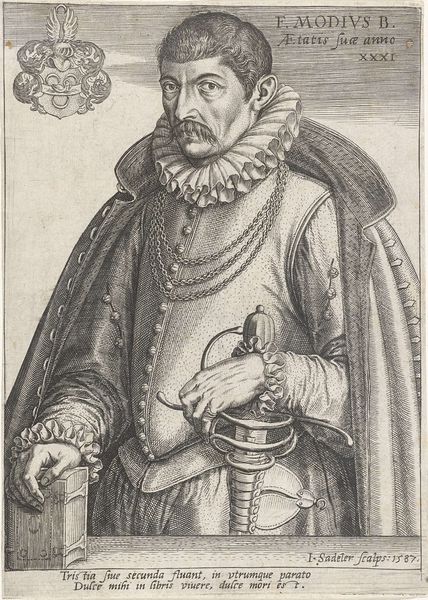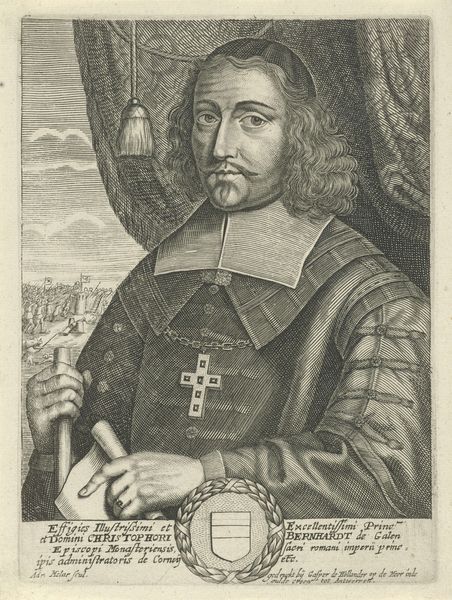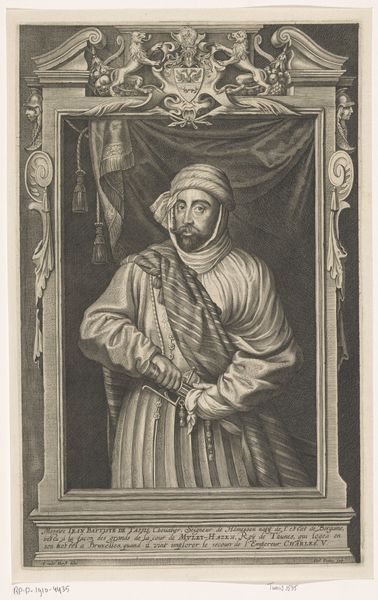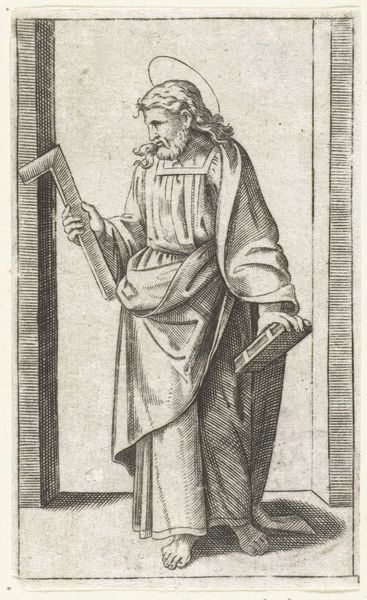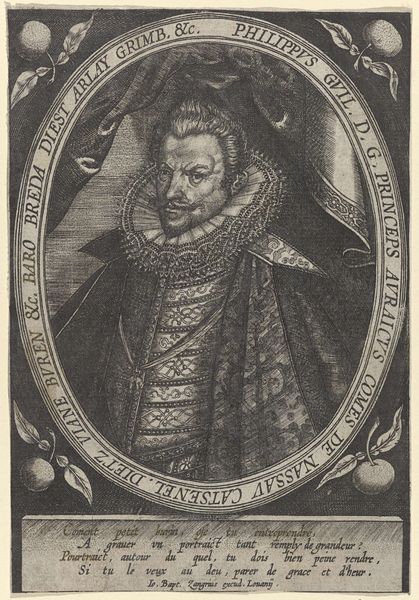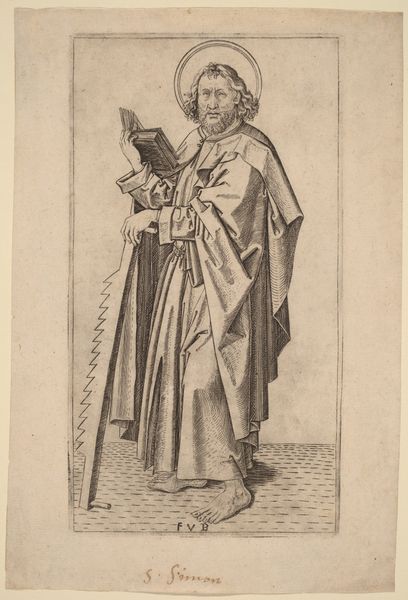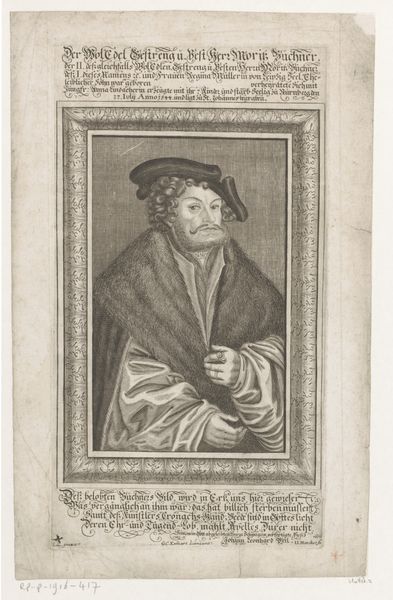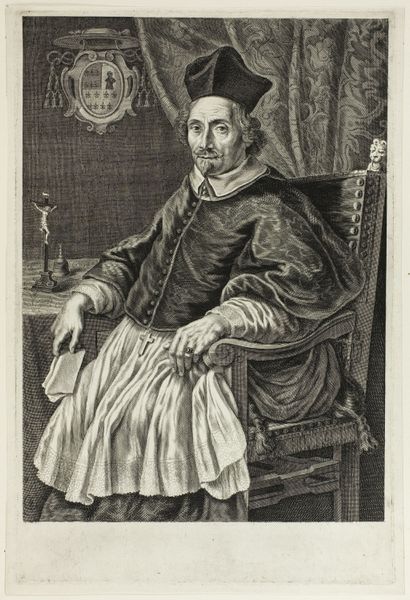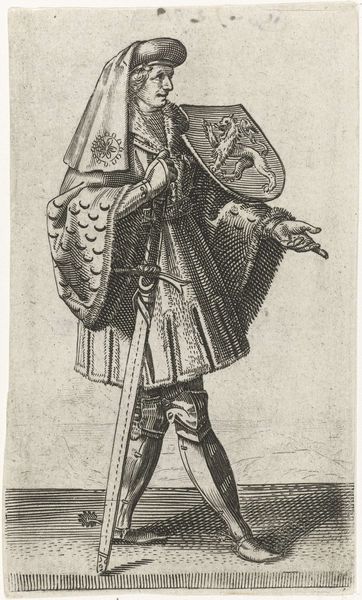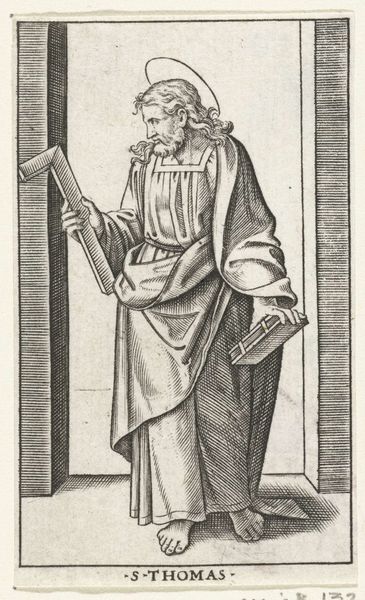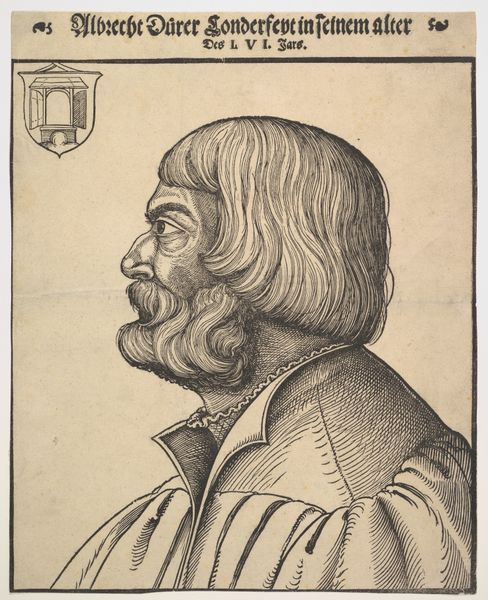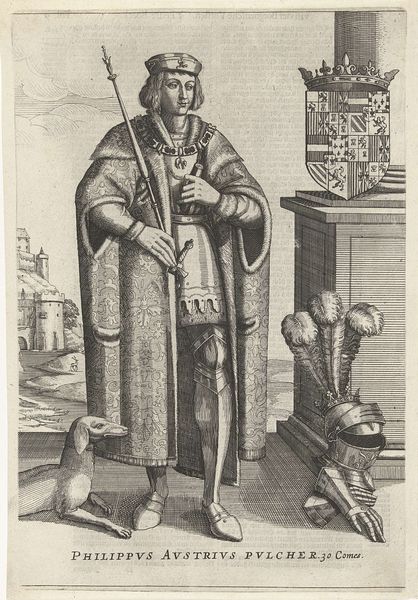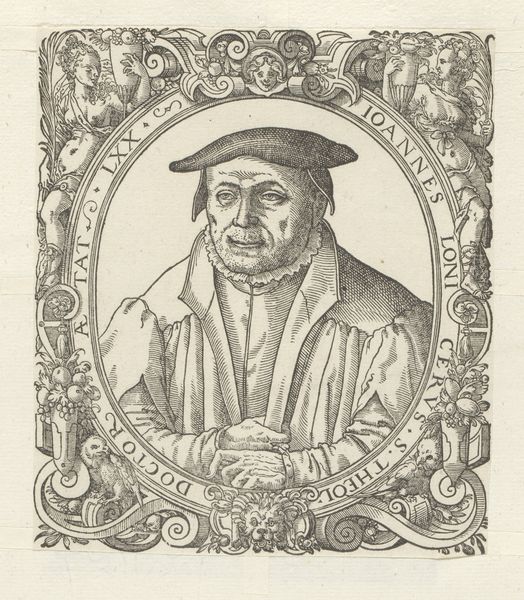
drawing, print, paper
#
pencil drawn
#
drawing
#
light pencil work
#
germany
# print
#
pencil sketch
#
caricature
#
charcoal drawing
#
paper
#
charcoal art
#
portrait reference
#
unrealistic statue
#
pencil drawing
#
portrait drawing
Dimensions: 172 × 118 mm
Copyright: Public Domain
Editor: So, this print, “Conrad Hertz, Stiffter,” artist unknown, it's undated but at the Art Institute of Chicago, seems like a pretty straightforward portrait. What jumps out to me, though, is the clear depiction of wealth through clothing and adornment...what's your take on this, in terms of reading into its history and materiality? Curator: Indeed. The choice of printmaking itself is telling. What would normally have been rendered unique through drawing or painting is instead put into reproducible form. The materials are base: paper, ink, and a printing press. Consider, what does mass production do to notions of portraiture and, ultimately, power in representing the individual? Editor: That's interesting! So you're saying the material itself kind of democratizes the image, even of a wealthy guy like Conrad Hertz? Does the quality of the materials factor in here at all? I mean, is this cheap paper or something more archival? Curator: Exactly. It cheapens it, and this very point—that Conrad is 'cheapened'—could be purposeful! To know the exact effect, we'd need to examine the paper stock and printing techniques used. Are there signs of careful craftsmanship, or is this a quickly-made object, churned out for a broader market? Think of how labor is implicated. Was this an act of skilled artistry, or commercial output? The materials used and the skill involved tell us a lot about its intended audience and message. The inscription provides more clues, too. What do you think of the text that accompanies the image? Editor: "Conrad Hertz Stiffter...of St. Maria Norib..." Okay, so he's a benefactor of some kind. So perhaps, being rendered as prints that would circulate widely, functions as advertising for Conrad's own piety, wealth, and power? It's a portrait, yes, but also functions like propaganda almost... Curator: Precisely! So even if it's "cheapened," it does spread his legacy more broadly through consumer society. In conclusion, focusing on the material aspects and context reframes our understanding. We’ve moved from considering simple representation to understanding how materiality is related to issues of class and social capital.
Comments
No comments
Be the first to comment and join the conversation on the ultimate creative platform.
